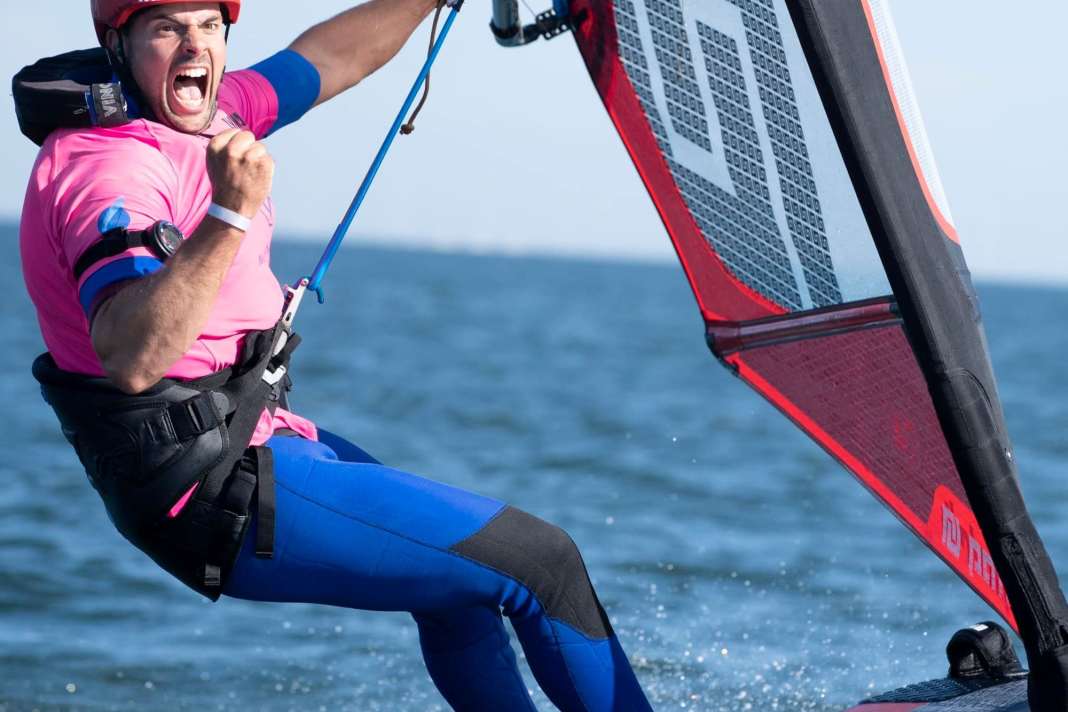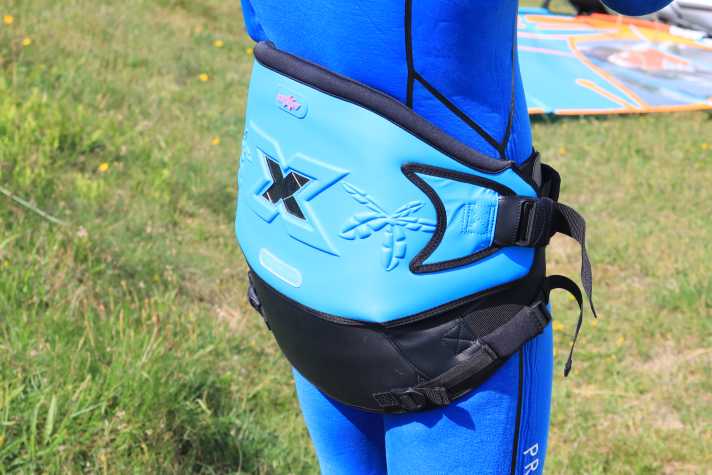





The question of the right type of harness divides the windsurfing community. Those who use a hip harness enjoy more freedom of movement, but sometimes struggle with riding up and less back support. Seat harnesses generally shift the forces more to the hip area, but many windsurfers find the low hook position and leg straps annoying.

The Liberty harness is designed to offer both: The freedom of movement of a hip harness and the good power transmission of a seat model. We asked one of the best racers in the World Cup, Arnon Dagan, why more and more pros are currently focussing on this harness concept and whether the system also makes sense for amateur surfers - and also tested the model.
Arnon, like many other pros, you also use the Liberty Carbon harness. Why?
At this point, I should expand a little. The Liberty brand is not actually new; it was founded by a Japanese man called Yasu, who already had all kinds of windsurfing accessories in his portfolio in the 90s. In 1998, Liberty also sponsored the legendary team with Anders Bringdal and Robert Teriitehau, who won the Trans Atlantic Race. After that, the brand went quiet, which is why the harness, which has actually been around for years, never really caught anyone's attention. Worldcupper Steve Allen was the first to arrive with the harness and recently it has become more and more popular in the World Cup. I have the contact to Japan because Yasu is the importer for my FutureFly boards. I use the harness too, of course.
There are countless trapeze models on the market. How is the Liberty model different?
You have to keep the evolution of the Slalom World Cup in mind: All racers used to ride with seat harnesses. At some point, we realised that riding with hip harnesses has advantages in strong winds: You can push your bum out further and don't transfer as much power to the board via your legs. Because: If you exert too much force in strong winds and put pressure on the board, foil or fin, you'll get the price. The board rises uncontrollably and you have to take your foot off the gas. With hip harnesses, you have better control in strong winds, which translates into higher top speed. The problem: hip harnesses tend to slide up when you're hanging on to a powerful sail. In addition, the back support is less good and many pros are plagued with back pain. The Liberty Carbon harness is a hybrid: it resembles a normal hip harness at the top, but encloses part of the bum and therefore cannot slide up - even though it has no leg straps.

Of course, you pros notice the smallest nuances in the race. Can the harness also make sense for amateur surfers?
I know many hobby surfers who have been waiting for just that. At last you can ride a harness that relieves the strain on your back like a seat harness, without having to live with the annoying leg straps and the associated restriction of freedom of movement when launching into the water, for example. Two straps also allow you to adjust how high or low the harness sits and therefore also the hook.
Why does the harness have a carbon fibre interior?
The aim is to distribute the incoming draft evenly. You don't want the harness to stretch with every incoming gust. The propulsion should be transferred directly, as with all other carbon components. However, the Liberty Carbon harness is not a hard-shell harness. It has a certain stiffness, but does not have a rigid shell, which can cause pressure points.
Arnon, thank you for the interview!
A brief test of the Liberty harness
We have already been able to test ride the Liberty Carbon harness briefly - with wave, freeride and slalom equipment. The harness is secured with an internal, stretchy Velcro strap. The fastener is kept simple, but is functional and easy to use. There is a solid plate under the hook that cushions the hook well and distributes the forces well.

The hook position is relatively low - it is noticeably lower than with conventional hip harnesses, more on a par with many seat harnesses. When hooked in, you can immediately feel that the padded pad under the bum absorbs a lot of traction and noticeably shifts the forces from the back to the buttocks area. In practice, the harness feels more like a seat harness, but without the sometimes annoying leg straps. Instead, there is no cutting in and, above all, no restriction of movement when starting out in the water. We only felt some pressure points on the side of the hips at the beginning of our test model. We can't say whether this gives you a noticeable speed advantage on the regatta course - but many professionals swear by it.
The surf conclusion:
The concept of the Liberty Carbon harness works well. It relieves pressure on the back like a conventional seat harness, but offers freedom of movement for the legs comparable to a hip harness. It should therefore also be of interest to many hobby surfers who have nothing to do with racing and regattas. The Liberty harness is available for 349 euros HERE in the Windlounge online shop.

